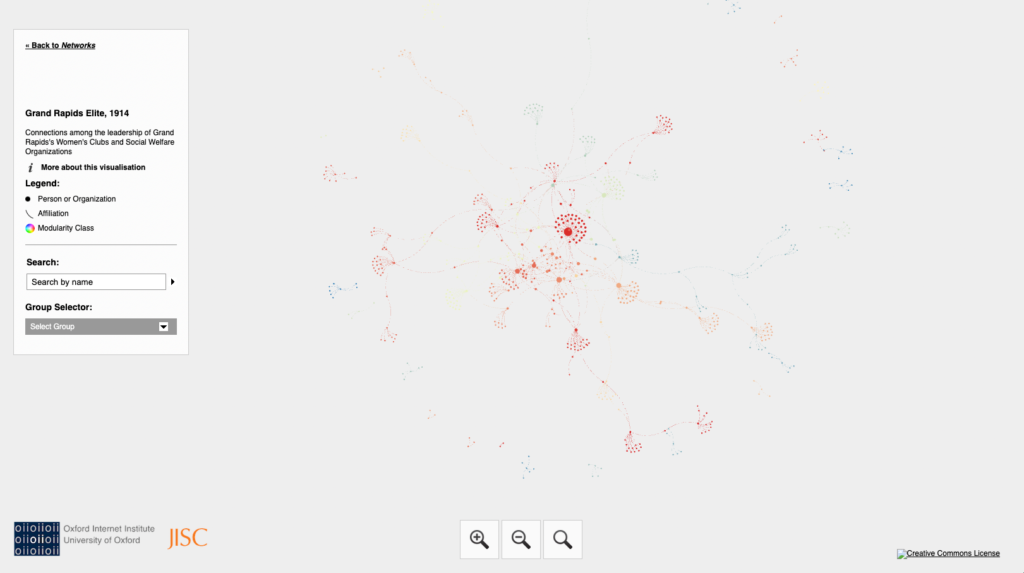
The project I chose to inspect was Brian Sarnacki’s Grand Rapids Elite network which aims to make connections between the leaderships of the Grand Rapids Women’s Clubs and Social Welfare Organizations. I enjoyed playing around with the project. I found the project easy to navigate and rewarding to explore. I wish the creator had put more time into making the project’s layout and design because (as you can see from the picture above) the chart is hard to read and it is easy for smaller edges and nodes to get lost in a sea of grey.
What (or who) are the nodes and what are the edges?
The nodes in Grand Rapids Elite represent persons or organizations. The edges are the connections between the people, their organizations, and organizations connections to other organizations.
What interactions does the project allow?
How does this impact their effectiveness and/or your engagement?
The project allows limited interaction. The user can hover over a node to get the name of the person or organization it represents. While hovering over a node all direct connections to that node are highlighted and all other nodes and edges get grayed out. If you click on a node it will fully erase all non-direct connections to that node so all the user can see are the direct connections. After clicking the user will be presented with a list of all the direct connections to that node, the node’s name, and the node’s modularity class.
The interactions increase my engagement by inviting me to explore the network. By highlighting connections it encourages the user to click around and try to find odd connections between two groups, which I found fun.
Looking at all these different projects was fun, networks are a unique and efficient way of representing communities. It would be very interesting to do this with Carleton’s student body.
1 thought on “Reflective Blog Post: Network Analysis”
Comments are closed.
I agree that reading the nodes has been difficult on different networks. It’s also interesting how you brought up creating one for Carleton’s student body. I wonder what types of edges, either academic or social, could potentially be included.